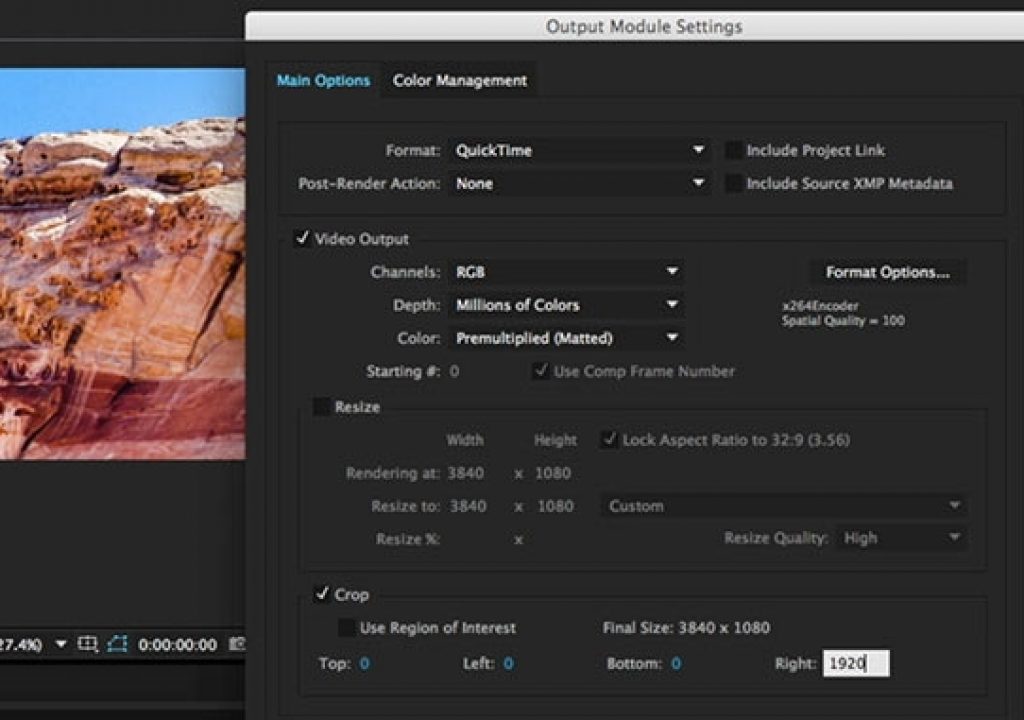OK thanks for the video link. But that must be a CS5.5 function cause it doesn’t work that way in CS5.0. Ive found that If I throw one comp into the render que and hold cntrl and select my.mov+alpha template for the output module it will change that one compand then additionally change all future comps dragged to the render que.but i have to do the above first. However, the bit depth was chosen to be 'millions of colors' because that's the only option that After Effects give me in the 'Output Module Settings.' Because 'Millions of Colors' refers to 8 bits per channel, even though my project is in 16 bpc, and even though my codec of choice supports 10 bit per channel color, I assume that my video is.
This process needs a third-party video converter. And I would use a freeware WonderFox Free HD Video Converter Factory to illustrate how to convert the AE project to MP4.
Note: We chose this converter based on performance, cost, and usability. After searching and testing a good measure of video converters out there on the market, we found this one. It can conduct conversions among 500+ formats and devices, and it is to convert AVI or Quicktime to MP4 in no time. Moreover, this converter is free and safe, and easy to use as well.

Before start, please free downloadfree download the software and install it on your PC. .

>> Launch Free HD Video Converter and open Converter. Click on “+ Add Files” to import the AE project into the converter.
>> Click on the right format icon to select the output format as MP4. If you have other thoughts, choose any format you prefer, like YouTube formats under the Web tab.
>> When all is set, hit Run to start the conversion.
Tips: You can add more projects into the converter for batch conversion.
This tutorial is on how to export a still frame out of After Effects. In it you’ll learn how to take a frame in After Effects and export a JPEG (.jpg), PNG (.png), PSD (.psd), or TIFF (.tif). And you will learn how to export a still with or without an alpha channel as well. Here’s how:

Save Frame As
To begin, open the Composition with the frame you want to export from After Effects and move your time position indicator to that exact spot in the timeline. Under the Composition menu, find Save Frame As and then select File…
The Render Queue should pop up as a result of this. If not, go under the Window menu and select Render Queue. In the Render Queue find Output Module and click Photoshop (or whatever your default setting is).
Output Module Settings for Exporting a Frame from After Effects
Doing this will open the Output Module Settings. In the Output Module Settings find the Format dropdown. Select the type of file you want to create.
Selecting Photoshop Sequence will give you a .psd file. JPEG Sequence will give you a .jpg file. PNG Sequence will give you a .png file. And TIFF Sequence will give you a .tif file. Please note, even though this says “Sequence” you will only be exporting one (1) frame.
Enjoying this tutorial? Check out this quick tutorial on using After Effect’s little-used Increment and Save feature.
For PSDs, TIFFs, and PNGs you can export the file with an alpha channel. An alpha channel keeps the information about what is supposed to be transparent. You cannot do this with a JPEG file. Let me repeat. A JPEG file (.jpg or .jpeg) does not contain an alpha channel. We clear?
Back to PSDs, TIFFs, and PNGs… if you want an alpha channel on them, from the Channels dropdown you must select RGB + Alpha. If you don’t need an alpha channel, just leave this set to RBG. Click OK to close the Output Module Settings.
Output To Settings for Exporting a Frame from After Effects

Addressable Output Module
Now back in the Render Queue, click the file name that’s next to Output To.
Music used in this video, “San Juan Sunshine” by Mikey Geiger, was purchased and licensed through my friends at Soundstripe. For 10% off a subscription use the code “EVF” at checkout. 🎧 (affiliate link)
Name the file to what you want it to be and set the destination. Click Save. Lastly in the Render Queue click the Render button to export the frame from After Effects. All done!
Did you enjoy this tutorial on how to export a frame in After Effects? If so, I’d love to keep in touch. All you have to do is go here to stay in the loop on new blog posts, tutorials, and announcements.

Input Output Module Definition
– Josh
